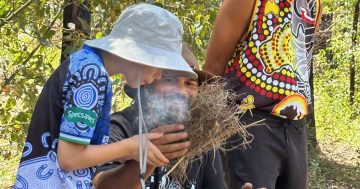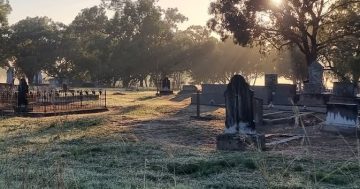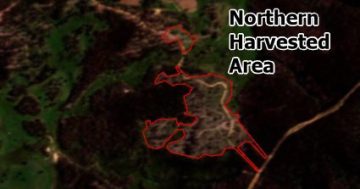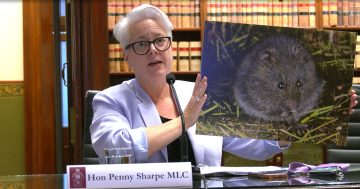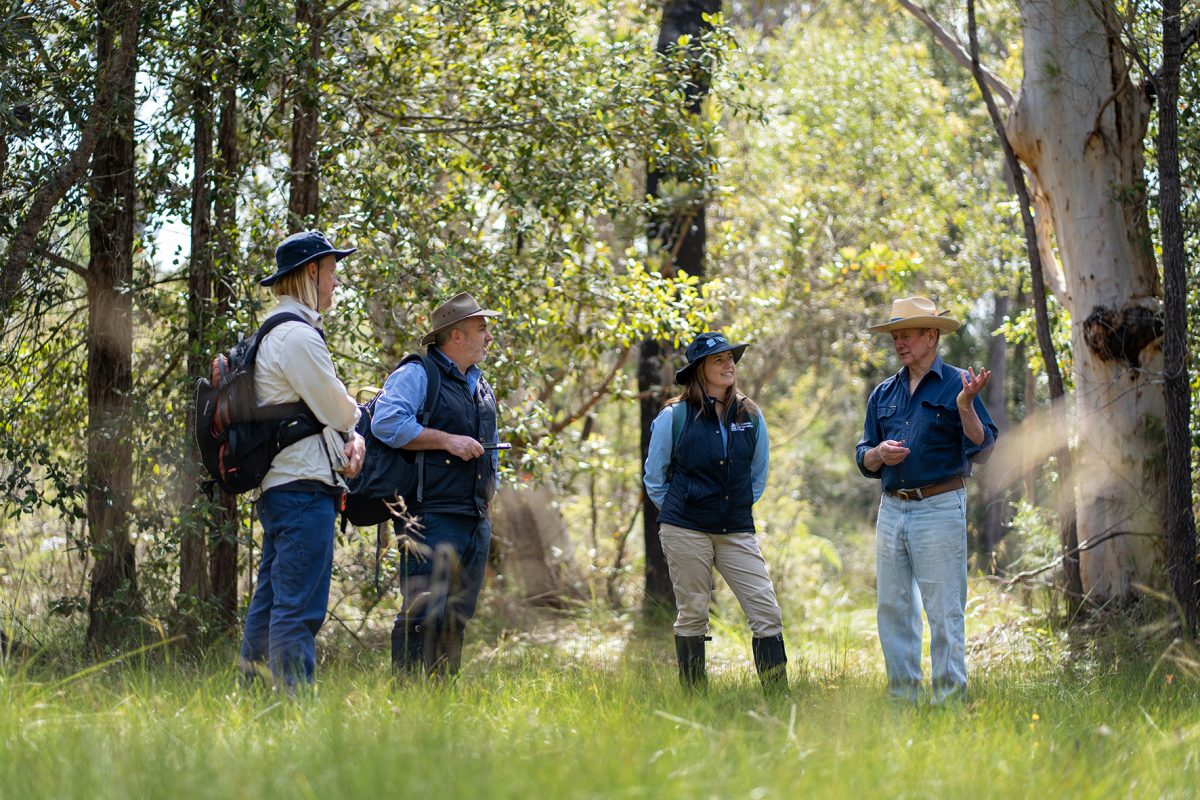
Landholder Max Dingle with Trust field staff James Lidsey, Adam Hook and Jodie Cooper on his property at Sussex Inlet. Photo: Colin Elphick.
Metal sculptures emerge from the natural landscape that attracted artist Max Dingle to his South Coast property, which is now protected under an in-perpetuity conservation agreement with the NSW Biodiversity Conservation Trust.
Under the agreement, the 40-hectare art and wildlife sanctuary at Sussex Inlet will be protected from urban development for generations to come.
The conservation site is particularly important to Max and the Trust due to encroaching urban development and its escape from the 2019-20 Black Summer bushfires.
Since entering into his conservation agreement last year, Max has expanded his knowledge of the native fauna and flora on his property through the fieldwork conducted by Trust officers.
“I knew there were animals here that are endangered, but I didn’t realise there were possibly Pygmy Eastern possums here, and that sort of gives me a thrill,” he said.
“There are animals here that are worth looking after.”
For a man who found the city not to his liking, Max sees high-rise ‘apartment living’ all around him, with centuries-old bloodwood trees home to Australian birds and animals, including gliders and glossy black cockatoos.
Max bought his property more than 40 years ago after searching for a place to lose himself in and focus on his art.
“I was working with welded steel and grinding metal and needed a place where I could make noise, and this suited me to have a welding workshop and painting studio and to be in the bush,” he said.
Max now draws inspiration for his metalwork sculptures from his bush surroundings. It is his “happy place” and his gift to future generations.
“We have to be very aware now that the environment needs all the protection it can get,” he said.
NSW Biodiversity Conservation Trust ecologist James Lidsey said Max’s property was burnt in a 2001 bushfire, but escaped the Black Summer fires, which came within 500 m of the conservation agreement site.
“Having a conservation agreement on here is really good due to the fact it’s lucky to have avoided the fires, but also in terms of the broader landscape and residential activity,” James said.
Mid-last year, while reporting on the site’s biodiversity, James said there was evidence of animals that had sought refuge from the 2020 fires.

Orchids have been found on the property. Photo: Colin Elphick.
Orchids are one species he was pleased to see protected on the site.
“There are two species around here, the Cryptostylis erecta (bonnet orchid) and Cryptostylis subulata (large tongue orchid), and they’re in flower, which is good to see,” he explained.
“They’re not too common in the wider state, so it’s been really nice to see those species bouncing back.
“And then there are other things that are on this site, like bloodwoods (Corymbia gummifera) and we’ve got yellow-bellied gliders in this area, which feed on these bloodwoods and pygmy possums that spend a lot of time in the banksias and feed on those.
“And then, because it’s a sandy soil and so close to the coast, we have bandicoots, and a wide array of mammal species that love the dense vegetation cover.
“It’s pretty amazing the diversity of animals that live in this area,” he said.
Max’s conservation agreement is registered on the property’s title and will remain in place for future owners and generations.
“I’ve watched trees grow from tiny saplings, and now they’re teenagers, I suppose,” he said.
“They’ve still got a long way to go. But yeah, I love it. I love the place. I’m happy as I can be in terms of the protection it’ll provide.”
The Trust works with willing landholders to establish and manage conservation agreements in an effort to safeguard native plants and animals on privately owned land, and to protect our most at-risk habitats and species.
Original Article published by Katrina Condie on Region Illawarra.







